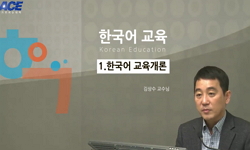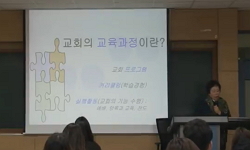이 연구는 국내 대학에서 외국어로서의 한국어 교육을 전공하는 학과의 교육과정 개발을 위한 것이다. 기존 한국어교육학과의 교육과정 대부분이 국어기본법에서 예시한 교육과정에 따라 ...
http://chineseinput.net/에서 pinyin(병음)방식으로 중국어를 변환할 수 있습니다.
변환된 중국어를 복사하여 사용하시면 됩니다.
- 中文 을 입력하시려면 zhongwen을 입력하시고 space를누르시면됩니다.
- 北京 을 입력하시려면 beijing을 입력하시고 space를 누르시면 됩니다.
대학에서의 한국어교육 관련 학과 교육과정 개발 연구
한글로보기https://www.riss.kr/link?id=G3762722
- 저자
-
발행기관
-
-
발행연도
2010년
-
작성언어
Korean
-
주제어
Korean education as a foreign language ; Korean Language Education Department ; Curriculum Standardization ; Korean teacher ; Teaching Korean as a foreign language ; Curriculum development ; Korean education department ; training teachers for Korean education ; designing Korean education curriculum ; mandatory credit for each area
-
자료형태
한국연구재단(NRF)
-
0
상세조회 -
0
다운로드
부가정보
국문 초록 (Abstract)
학부의 한국어교육학과 교육과정 개발을 위하여 본고에서는 국내 17개 한국어교육학과의 교육과정과 해외 대학 중 한국어 수요가 많은 일본의 20개 한국어학과와 중국의 29개 한국어학과의 교육과정을 조사하여 그 특성을 분석하고, 국어 교육에서의 교수요목을 바탕으로 국내 대학 한국어교육학과 교육과정 설계를 위한 기본 원리를 구성하고 한국어 교육학을 위한 교육과정을 제시한다.
한국어교육학과에서 개설된 전 교과목을 보면 1영역, 2영역과 5영역의 교과목 비중은 국어기본법에서 제시한 필수 이수 학점 비중과 비슷하나 한국어교육의 핵심인 3영역은 10% 정도 부족하고, 4영역은 약 16% 정도가 많이 개설되어 있는 것을 알 수 있었다. 이는 실제 학과에 개설된 교과목이 국어기본법에서 제시한 필수 이수 학점만을 충족하고 있고 교과목 개발이 많지 않아 다양한 교과목을 접할 수 있는 기회가 부족하고, 이를 강의할 교수 자원이 절대적으로 부족하기 때문으로 보인다.
해외 대학 한국어학과의 교육과정을 국가별로 그 특성을 비교하여 보면 한국 내의 교육과정이 국어기본법의 기준에 맞춰져 있어서 한국어학 및 한국어교육학에 초점이 놓여 있다면 일본 내에서는 언어학적인 대조 및 한국어 능력 향상에 초점을 놓고 있고, 중국 내에서의 교육과정은 한국어 능력 향상 및 한국어학에 초점을 놓고 있음을 알 수 있었다.
이러한 분석 결과를 바탕으로 한국어교육학과의 교육과정은 해외 대학에서의 교육과정을 고려하여 국어학이 아닌 한국어학의 지식을 각 기능별로 연결해서 제시하는 것이 필요함을 알 수 있었다. 또한 다양한 목적과 대상을 위한 학문의 영역을 넓히기 위하여 한국어 교육 영역 교과목도 보다 다양하게 개발하였다. 그리고 한국어 교육 실습도 보다 강의시수를 늘리고 전문화하여 제시하였다.
이 연구는 국내 대학에서 외국어로서의 한국어 교육을 전공하는 학과의 교육과정 개발을 위한 것이다. 기존 한국어교육학과의 교육과정 대부분이 국어기본법에서 예시한 교육과정에 따라 개설되어 있다. 그러나 국어기본법의 예시 교과목이 대학원 중심으로 짜여져 있고 한국어 교원 자격증을 받기 위한 필수 교과목만 제시되어 있어 학부에 그 교육과정을 그대로 적용시키기에는 많은 부족한 점이 보인다. 또한 국내 뿐만 아니라 해외 대학의 한국어학과 교육과정도 고려한 교육과정 개발이 되어야 할 것이다.
학부의 한국어교육학과 교육과정 개발을 위하여 본고에서는 국내 17개 한국어교육학과의 교육과정과 해외 대학 중 한국어 수요가 많은 일본의 20개 한국어학과와 중국의 29개 한국어학과의 교육과정을 조사하여 그 특성을 분석하고, 국어 교육에서의 교수요목을 바탕으로 국내 대학 한국어교육학과 교육과정 설계를 위한 기본 원리를 구성하고 한국어 교육학을 위한 교육과정을 제시한다.
한국어교육학과에서 개설된 전 교과목을 보면 1영역, 2영역과 5영역의 교과목 비중은 국어기본법에서 제시한 필수 이수 학점 비중과 비슷하나 한국어교육의 핵심인 3영역은 10% 정도 부족하고, 4영역은 약 16% 정도가 많이 개설되어 있는 것을 알 수 있었다. 이는 실제 학과에 개설된 교과목이 국어기본법에서 제시한 필수 이수 학점만을 충족하고 있고 교과목 개발이 많지 않아 다양한 교과목을 접할 수 있는 기회가 부족하고, 이를 강의할 교수 자원이 절대적으로 부족하기 때문으로 보인다.
해외 대학 한국어학과의 교육과정을 국가별로 그 특성을 비교하여 보면 한국 내의 교육과정이 국어기본법의 기준에 맞춰져 있어서 한국어학 및 한국어교육학에 초점이 놓여 있다면 일본 내에서는 언어학적인 대조 및 한국어 능력 향상에 초점을 놓고 있고, 중국 내에서의 교육과정은 한국어 능력 향상 및 한국어학에 초점을 놓고 있음을 알 수 있었다.
이러한 분석 결과를 바탕으로 한국어교육학과의 교육과정은 해외 대학에서의 교육과정을 고려하여 국어학이 아닌 한국어학의 지식을 각 기능별로 연결해서 제시하는 것이 필요함을 알 수 있었다. 또한 다양한 목적과 대상을 위한 학문의 영역을 넓히기 위하여 한국어 교육 영역 교과목도 보다 다양하게 개발하였다. 그리고 한국어 교육 실습도 보다 강의시수를 늘리고 전문화하여 제시하였다.
다국어 초록 (Multilingual Abstract)
The focus of this study is to develop Korean language course as a foreign language for the department of the Korean language education. Most of existing curriculum of the department is based on the examples of the Korean Language Act of 2005. However ...
The focus of this study is to develop Korean language course as a foreign language for the department of the Korean language education. Most of existing curriculum of the department is based on the examples of the Korean Language Act of 2005. However the Act can not be applied to undergraduate studies because it's focused on the curriculum for graduate schools and only presenting mandatory subjects for the teaching certificate of Korean language. Supplementing the Act, it is necessary to develop the curriculum considering not only domestic Korean language courses but also foreign courses. To develop Korean language education course for undergraduate schools, this study analyzes 17 domestic courses and 20 Japanese courses and 29 Chinese ones, where the demand for Korean language eduction is high, and presents basic principles regarding designing Korean education curriculum and the actual curriculum for the department. Courses for the 1st, 2nd, and 5th areas of the domestic curriculum is correspondent to the mandatory credit required by Korean Language Act, but the 3rd, which is the essential part of Korean education, is 10% less than the Act rules, and the 4th course is excessing the regulation of the Act by 16%. This is due to the fact that the existing courses are only presenting courses following basic requirements of the Act and not developing new courses which can open up new opportunity to the students. Professors for the anticipated courses are also severely lacking. While domestic courses are focusing on Korean linguistics and language educations following the frame of the Act, Japanese courses emphasize comparative linguistics and improving language skill itself and Chinese courses are paying attention to improving language skill and Korean linguistics. Based on the analyze, it is concluded that curriculums of Korean education department need to link each area of the Korean linguistics regarding Korean as a 'language' not as the 'mother tongue' This study also presents newly designed Korean education courses to extend the area of the study for various purposes and targets. It also suggests to extend and specialize Korean education practice.











